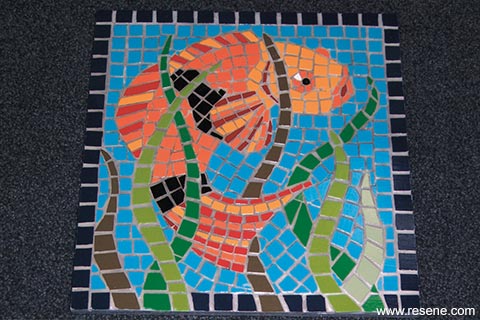
From Mr Kerr: I have been making mosaics using Resene testpots and Resene Uracryl for some time. This mirror was completed seven years ago and has hung outside in the weather, but has kept its colour well.
I paint the tile using Resene testpots, then apply Resene Uracryl clear to protect the paint. I then break the tile into pieces, create the mosaic, and cover it with Uracryl again.
Q. My house recently suffered smoke and water damage as the result of a fire. The insurance company had it repainted. The colours specified were Resene colours, as the house was previously painted using Resene.
I had an inspection done after the insurance painters finished. This pointed out a lot of remedial painting that needed doing, so the insurance company got in a second lot of painters. When I went to the house, they were using non-Resene paints. I questioned this with the insurance loss adjuster. His reply was: “I have been assured by (the new painters) that all paint used by them to carry out the remedial work is tinted to the Resene colours given to them (by the original painters). This is standard industry practice.”
I find this hard to believe. Surely there is breach of copyright and trademarking laws coming into effect here? What about all the R&D and marketing that you put into these paints?
I have always been told that Resene is the best paint to use, because of pigmentation, cleaning etc. Do you believe the substitute will be of the same quality? The bases are pastel. It would really help me out if you could give me some advice here, as I think the insurance company is just trying to take the cheapest option.
A. In reality ‘colour matches’ seldom truly match the original shade, due to the different tinters used. Resene uses highly concentrated tinters and a wider range of bases than most paint companies, which means that our tinted colours are often very different from the colour matches provided by competitors. Generally, the more tinter in a paint, the less durable the product is, so the more concentrated the tinter, the less is needed, which is best for the paint. However, highly concentrated tinters are expensive. In addition, some of Resene’s products, such as Resene SpaceCote Low Sheen, a low sheen waterborne enamel suitable for broadwall areas, are not available from other companies.
We have many clients whose painting contractors try to colour match Resene colours in other products.
They simply demand that the product specified is used, to ensure they get the Resene finish they are paying for. In your case, assuming you have replacement insurance or similar, it is perfectly reasonable to request that if the previous paint system was Resene, it should be replaced with a new Resene one, unless you have specifically requested something different. The insurance company should either have hired contractors who like to use Resene or demanded that the painters hired use Resene on the project.
From Gary: We recently purchased some paint. However, when we applied it to the walls, the colour looked very different from the colour chart, but when we took the paint chart and sample outside, the colours looked the same.
A. Most paint companies use printer ink colour matches on their colour charts, as Resene does on a small number of its charts. Printer ink performs differently under lighting, compared with paint, due to the different make-up of the materials – this is called metamerism. Because of this, it’s important to view the actual paint in the area you are planning to paint (normally with a testpot), to ensure it looks right. Having said that, many Resene colour charts are now printed using Resene SpaceCote Low Sheen. This alleviates the effect of metamerism and gives a better idea of how the colour will look when it’s tinted into the paint.
The size of the paint sample also affects the way you view the shade. To critically evaluate a colour, you need approximately a 1 sqm sample, so make sure you paint an area that size in two coats when using a testpot, to get the best impression of the end result.
From Leonie: I am planning to paint over tiles and have been told that there is a product you can use to help the topcoat stick.
A. Resene has a product called Resene Waterborne Smooth Surface Sealer, which is available from all Resene ColorShops. You can apply it over smooth surfaces, then paint over the top in a range of Resene topcoats, in thousands of Resene colours.
From John: We are planning to paint the outside of our home, but are unsure whether gloss, semi-gloss, satin or low sheen is right for the job. Can you offer some tips on what to use and where?
A. The sheen level of a product generally affects its cleanability, with high-sheen products being typically easier to clean than low sheen ones. However, the lower the sheen, the better it will hide surface imperfections. Semi-gloss finishes are becoming more popular outside, as they are easy to clean but are more sympathetic to the substrate than a higher gloss finish. For timber, a satin finish, such as Resene Lumbersider, is generally the most popular.
The most common Resene decorative paints used outside are Resene Lumbersider (satin), Resene Hi-Glo (gloss) and Resene Sonyx 101 (semi-gloss). Colours tend to look brighter and cleaner when painted in a high gloss such as Resene Hi-Glo, so if you’ve selected an earthy colour, you‘re better to opt for a satin finish, such as Resene Lumbersider, to retain that visual quality.
From Steve: I’ve heard about low VOC paints. What is this?
A. VOC stands for Volatile Organic Compounds – organic materials that form a vapour in the air under the range of environmental conditions in which we live. Generally, ‘volatile’ means compounds that have a boiling point of less than 250ºC at normal temperature and pressure. Resene has achieved Environmental Choice approval on a wide range of its products since 1996, meaning they meet maximum VOC limits and other criteria. Where possible, it is best to select a Resene Environmental Choice-approved product, as it meets recommended VOC limits. While it might be tempting to select a product with the lowest VOC level, this can be misleading. Try to choose paint products with VOCs lower than 100 gms/L, but don’t get too worried about differences in stated VOC levels below this level. And no matter whether a paint is high or low in VOC, you should still open windows if painting inside to ensure air is circulating. This will help the emissions from the paint to quickly disperse and the paint film to cure properly.
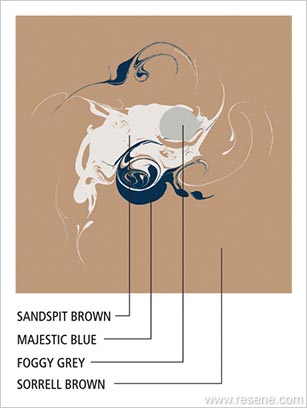
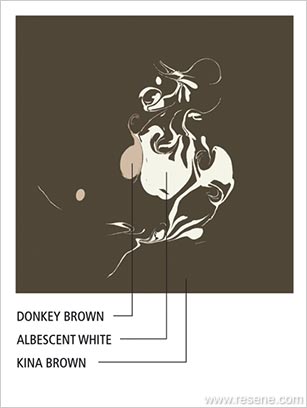
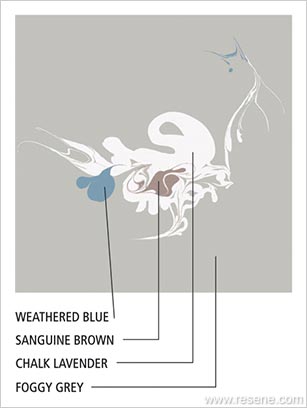
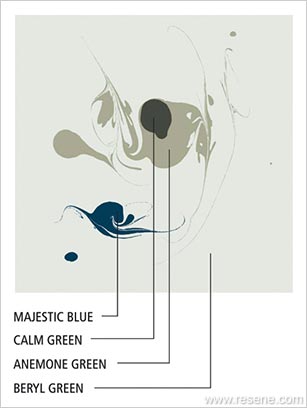
From Alice: On the outside of the Karen Walker paint charts are four paintings. These are like swirled paint and I was wondering how this effect was created?
A. They were made by pouring the base colour onto a shallow tray, then using spoons to pour in other colours and dragging some of these with narrow tools to create swirls, much as chefs do with sauces on desserts.
Search habitat magazine stories
Printed copies of habitat highlights are available from late March 2024 at Resene ColorShops and resellers, while stocks last. You can view back issues of habitat magazine online.
Specifiers:
If you have an idea, project or story that you think would suit habitat, we’d love to hear from you. Please drop us an email with your details and include photos if submitting a project.
Sign up for a DIY card and Save! Australia | New Zealand